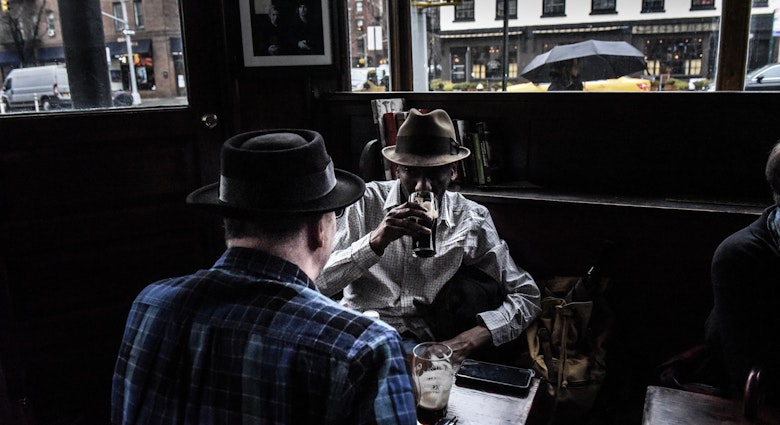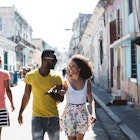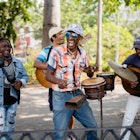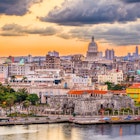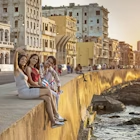On my last day in Cuba, I stood on the impressive staircase at the University of Havana taking in my final views of an island I’d waited years to visit. By this point, I had walked along Havana’s famous Malecón, shared a bench with a bronze John Lennon, taken a ride across the country in '52 Bel Air, celebrated Jose Martí’s birthday, followed a trail of mojito stands to a disco in a cave, learned salsa on a rooftop, and bought a bottle of (what turned out to be fake) rum.
My conclusion: Cuba certainly is a country of its own, a place of myriad eccentricities ranging from charming to challenging.

While the rest of the world has always had Cuba at its fingertips, Americans are still adjusting to the fact that this terra incognita is now within reach. What I found when I arrived was a place altogether strange and familiar, a place whose unique cityscapes frequently graced the silver screen, whose spirit we had seen in the homes of our Cuban American friends, but a place we’d only ever really heard about in the context of prohibition. You can’t go there. It’s illegal.
Despite Americans’ newfound excitement, Cuba has long been on the tourist trail of those looking for a travel destination without all the conventional trappings of the western hemisphere. It’s a country valued for its isolation, even though said policy imposes a wide range of challenges for those living there. Now that Cuba’s biggest neighbor is gaining access to the island nation thanks to recently relaxed diplomatic relations, the inevitable question is this: will this new source of capital and traffic ‘ruin’ the country with consumerism? Since 2015, Cuba has seen a whopping 30.6% increase in visitors; in 2015 alone, American visits went up by an incredible 77%. When asked about the potential impact of American tourism, one of my tour guides summed it up rather succinctly: ‘more money will come into the country and it will adapt. But Cuban culture has a lot of personality.’ Cuba won’t be changed that easily.

But as tourism begins to really take hold in Cuba for the first time in decades, an internal shift has started to take place. The cities hum with activity like they always have, but with a distinctly more international flair, and new energy is being poured into homegrown initiatives: new paladares (private restaurants), casas particulares (private homes), watering holes, art studios, venues and museums are all ready for business. As visitors continue to pour in, Cubans frustrated with low state wages (most make around US$30 per month) are turning to tourism to make up the difference. Many of these opportunities have been made possible by Raul Castro’s policy shifts permitting more private businesses and better internet access, but such advances are highly regulated.
Havana: the epicenter of change
Havana doesn’t ever seem to stop moving, locals and tourists pulsing through its arteries, a network of dusty streets walled with jaw-dropping buildings dressed with beautiful details: intricate ironwork, towering windows, open balconies, stained glass, worn paint. Don’t wonder at your surroundings too long, though – bicycle taxis whiz by and have little regard for careless pedestrians.
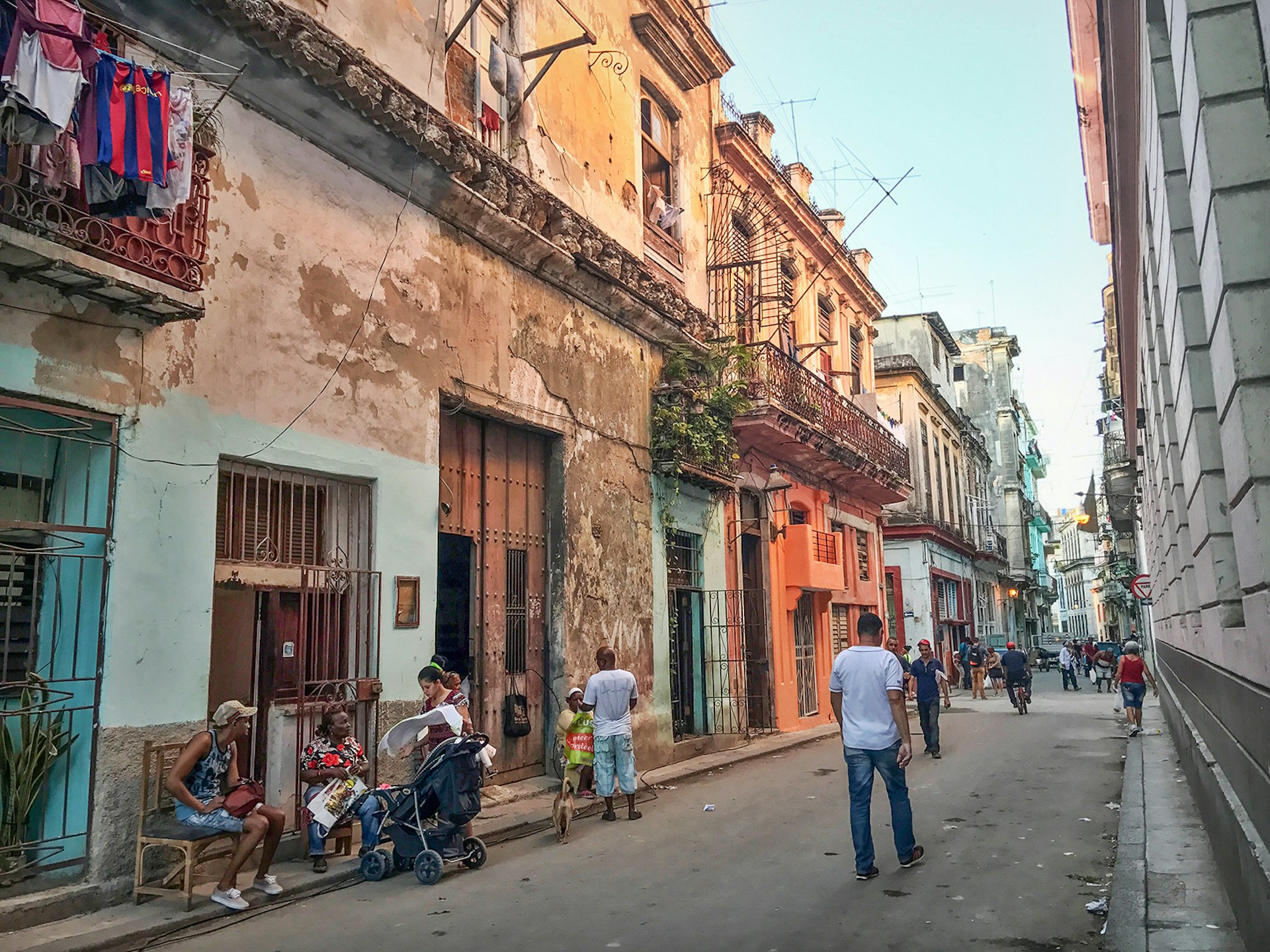
Wandering the streets you’ll find banks, historic plazas and impressive colonial churches, but also hip boutiques, kitschy-cool bars and stunning casas particulares. Edgy street art splashes across walls, tattoo shops host community building events and young designers create fashionable goods for both visitors and Cubans alike. This capital city has served as the nexus of creative change as Cuba marches headlong into an uncharted future where tourism just might be king.
Take a ride: the private taxi’s new starring role
Perhaps the single biggest symbol of Cuban-ness in the eyes of a foreign visitor is the antique car. Held together with ingenuity and sheer willpower, these vintage machines can be found on all the country’s roadways – a rainbow armada of Bel Airs, Oldsmobiles and Cadillacs that shuttle visitors and locals from neighborhood to neighborhood, and even city to city.
My first private taxi driver drove me around the dusty streets of Havana as part of a history tour – we stopped at a Café Arcangel in Centro Habana, took in the explosion of color known as Fusterlandia, and cruised out to what the locals call El Bosque, a park full of old trees covered in shrouds of dangling vines, a rare green spot in Havana’s urban sprawl. A soft spoken gentleman who formerly worked as an electrical engineer for the state, he drove a beautifully kept Chevrolet so old that the sound system design only featured a single large speaker in the middle of the dashboard. Today, he works closely with his wife and an unofficial coalition of drivers to organize local and cross-country tours.

These cars and the people who drive them are on the forefront of the state-to-private sector shift, and the Cuban government is searching for ways to manage this form of entrepreneurship as demand for better transport systems increases. The government has mandated price and route controls on private taxis, who in turn recently reduced their trips in protest. Whether a compromise will be reached remains to be seen – for now, growing pains are the name of the game.
Creative casas: finding Cuban culture in homestays
Casas particulares make up another industry on the forefront of Cuba's changing tourism infrastructure, and as visitors continue to arrive in droves, casa owners are finding new ways to attract potential guests. Some have found unique niches by offering dance or art classes, while others offer city tours or excursions (often conducted by friends and family).
At colorful Casa El Ceramista (homestay.com) in Trinidad, Alexey, a professional ceramicist, offers pottery classes to his guests. Trinidad has a strong pottery tradition, and local ceramics can be found in shops all around town. Luckily, I had the opportunity to take this class during my time at the casa – Alexey gave careful directions as I tentatively applied pressure to the spinning mound of clay on the throwing wheel in efforts to create something resembling a bowl. While we worked, the smell of spiced shrimp and pumpkin soup wafted over from the kitchen and guests laughed on the upstairs terrace. Forget the Hotel Nacional – this was Cuba.
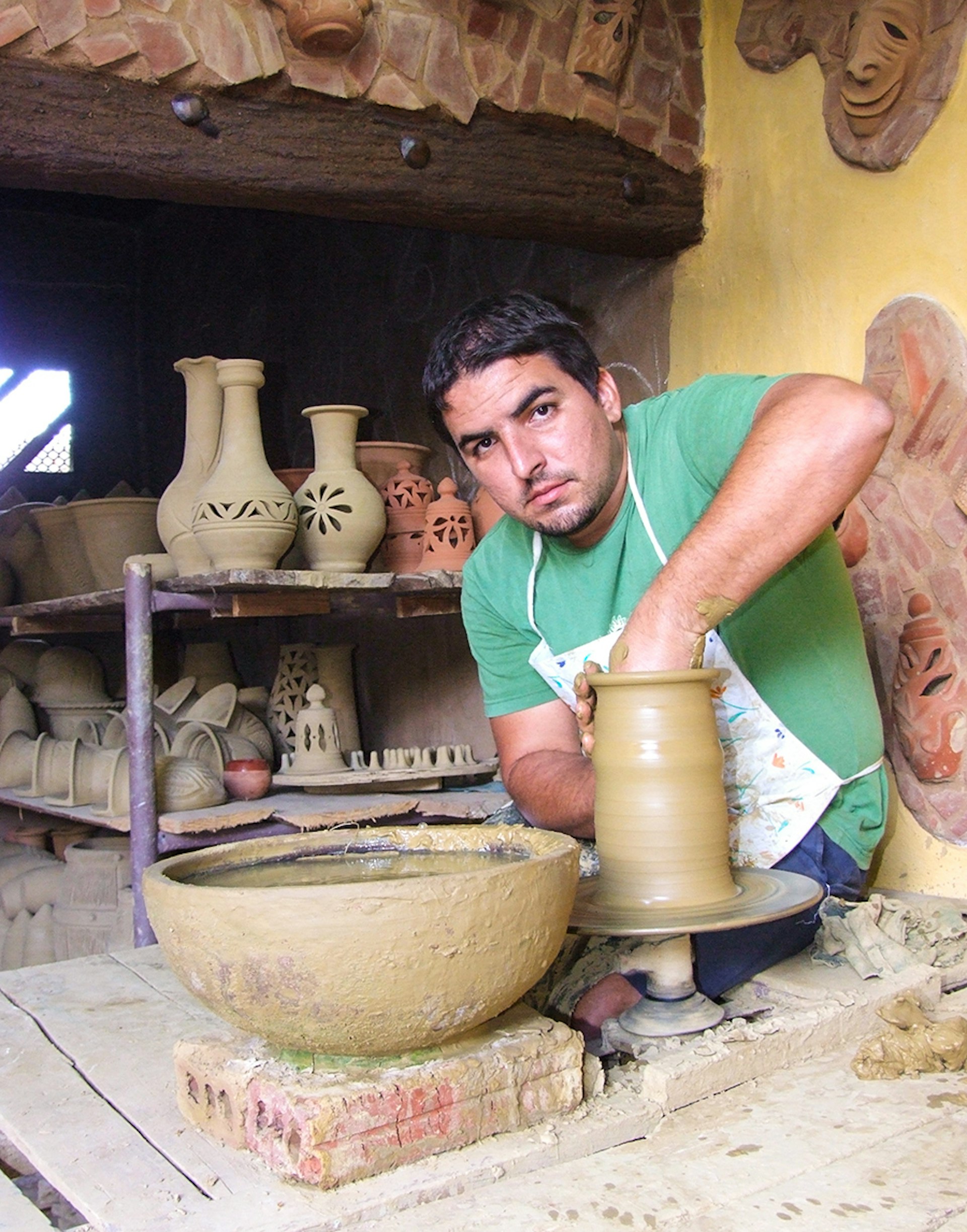
Despite the fact that new casas are popping up across the country, Cuba is still coping with a significant lack of accommodation for the booming number of visitors. State-run hotels in Havana are boasting sky-high prices, and booking ahead is imperative. Casas provide a good alternative to government options, but even they are filling up quickly; while visitors used to be able to sort casa accommodation once they hit the ground, the need for advance reservations continues to grow.
Casas particulares were an ingrained part of Cuban culture long before the recent tourism spike, and a smattering of booking agencies have invested in the existing market. For example, Homestay.com began operating in the country in 2013 (earlier than its US-based competitors), and their business model emphasizes the local connection between visitor and host. Homestay casa owners frequently help facilitate travel and often offer bookable services like bike tours, cooking lessons and shared dinners; such hands-on guidance is indispensable for visitors who just might be a bit overwhelmed by Cuba’s complexities.
Tourism 2017 and beyond
The future of Cuban tourism is full of speculation – numerous think pieces on the topic dot the internet, and the world waits with bated breath to see what the new US presidential administration will do in the coming year. For now, though, Cubans and tourists alike are embracing the winds of change, even through bumpy waters.
Lonely Planet writer Bailey Freeman traveled to Cuba with assistance from Homestay.com. Lonely Planet contributors do not accept freebies in exchange for positive coverage.



